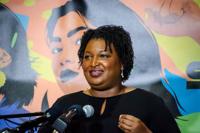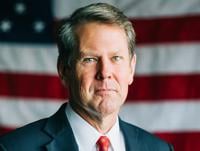Demonstrations protesting the killing of a black man, George Floyd, by a white police officer in Minneapolis turned into rioting, looting and assaults on law enforcement officers in major cities, reminiscent of the widespread violence following the assassination of Dr. Martin Luther King Jr. in 1968. Since then the protests have broadened to include the deaths of other black men at the hands of police officers, including Ahmaud Arbery, who was shot and killed in a Brunswick suburb in February by two white men who said they thought he was a burglar. Both men were arrested and charged with murder and aggravated assault.
In the nation’s capital, violence struck close to the White House itself in the past week. Even St. John’s Episcopal Church, which is across the street from the White House and is where presidents since James Madison have attended services, was threatened with fire being set in its offices although the main structure was spared. President Donald Trump called up the National Guard and mobilized federal law enforcement agencies to keep the protesters at bay. Trump focused on anarchists including Antifa and others fomenting the violence and vowed to prosecute them to the fullest extent of the law. Identifying and arresting the offenders could be extremely difficult since many of the protesters had a reason for wearing masks because of the coronavirus pandemic.
Atlanta, birthplace of Dr. King and a center of the civil rights movement, faced violence early in the week as fireworks and the burning of construction materials near Centennial Olympic Park resulted in police firing teargas toward the crowd. Atlanta Mayor Keisha Lance Bottoms spoke passionately about the violence in her city. “You are disgracing our city, you are disgracing the life of George Floyd and every other person who has been killed in this country,” she said. It is a message that should be heeded across the country and especially in Atlanta, home of the leading advocate of social change through nonviolent actions, Martin Luther King Jr.
Following that theme, demonstrators in Cobb during the week were peaceful, a model for such activities around the country. One of the organizers, Charlotte Collins, said the Cobb protests would continue until justice is achieved for the victims. “We’re here to protest against injustice against African Americans, and we’re going to continue to be out here to let people know in Marietta that there are people who ... stand against this bigotry and racism,” she said. Without doubt, Americans have the First Amendment right to protest but it must be peaceful or it defeats its objective.
Attorney General Bill Barr and FBI Director Chris Wray sought to assure people that the investigation into Floyd’s death will bring about justice. Barr acknowledged at a news conference that many African Americans do not have confidence in the criminal justice system. He said federal agencies will be working with community leaders to find solutions “so that Mr. Floyd’s death will not have been in vain.” Barr pointed out that while most demonstrators were peaceful, others were exploiting the opportunity to pursue their agendas with “senseless acts of terrorism, designed to terrify fellow citizens.” He pledged that “the rule of law will prevail.” Wray said this is “an incredibly challenging time for our country” and the FBI is moving quickly in its investigation. Capturing the essence of the situation, Wray said: “Our entire country is trying to find a way forward.”
Finding a way forward out of racial unrest and division has been elusive over the years. Numerous groups have studied the issues and made recommendations, foremost of which was the National Advisory Commission on Civil Rights, known as the Kerner Commission for its chairman, Gov. Otto Kerner Jr. of Illinois. Created by President Lyndon B. Johnson in 1967 amid rioting in major cities across the country, the commission came forth with recommendations that addressed the root causes of the unrest.
“Our nation is moving toward two societies, one black, one white — separate and unequal,” the report said. It blamed white racism for much of the responsibility for black rioting and rebellion. Solutions recommended by the commission included creation of new jobs, construction of new housing and cessation of de facto segregation to end the ghetto environment for black people. President Johnson did not accept the recommendations and in April 1968 rioting broke out in more than 100 cities after the assassination of Martin Luther King Jr.
Clearly, no solution to the nation’s festering racial unrest will be found until there is a national commitment to do so and effective leadership on all fronts. The way forward is not through extreme measures aimed at law enforcement, such as disbanding the police department — a decision announced by a majority of Minneapolis City Council members at a protest rally. Nor is cutting the police budget in favor of more social services as New York Mayor Bill de Blasio pledged in the face of protests.
The way forward is not through continuing mass protests indefinitely but instead should begin with a commitment to nonviolence by all concerned. It worked during the civil rights movement of the 1960s — and it will work again.









(0) comments
Welcome to the discussion.
Log In
Keep it Clean. Please avoid obscene, vulgar, lewd, racist or sexually-oriented language.
PLEASE TURN OFF YOUR CAPS LOCK.
Don't Threaten. Threats of harming another person will not be tolerated.
Be Truthful. Don't knowingly lie about anyone or anything.
Be Nice. No racism, sexism or any sort of -ism that is degrading to another person.
Be Proactive. Use the 'Report' link on each comment to let us know of abusive posts.
Share with Us. We'd love to hear eyewitness accounts, the history behind an article.